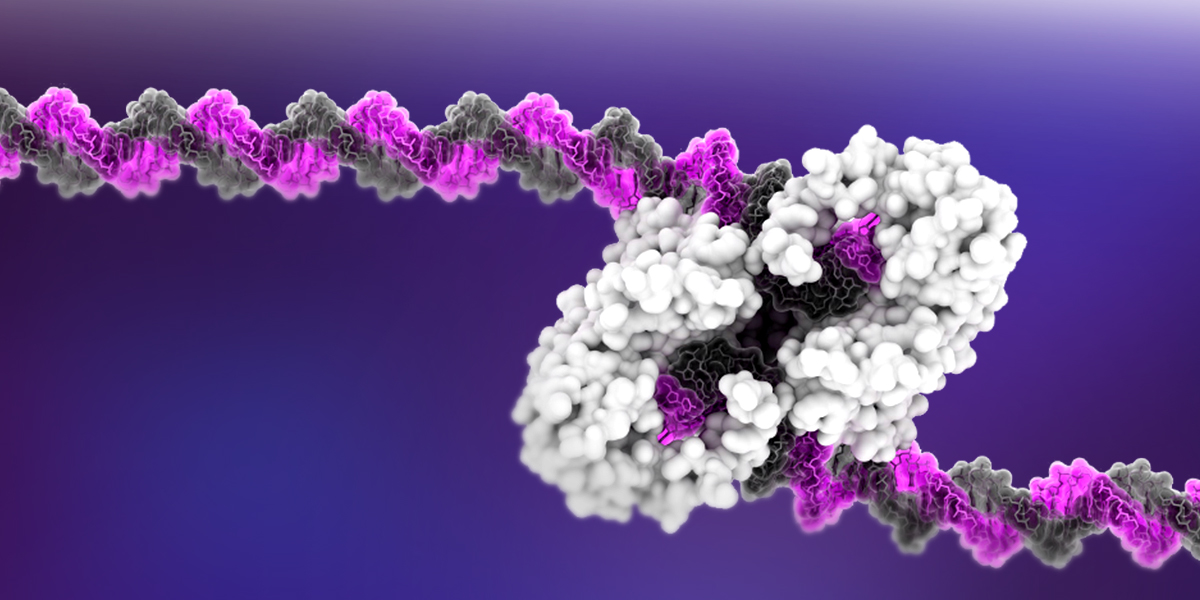TECHNOLOGY UPDATE: Check out our blog about TnX – the next generation transposase – that brings together workflow simplicity with improved uniformity of coverage! Released in 2024!
Introduction
If you’re a life sciences researcher, chances are that DNA sequencing is a crucial step in your research. The capacity of NGS instruments has grown exponentially, and the diversity of different assays that are now routinely performed with a sequencer have widely proliferated. Still, obtaining accurate and high-quality sequencing data depends heavily on the upstream processing steps that turn a sample into a sequencer-ready library.
Solving those workflow challenges is the foundation of our approach to library prep technology development at seqWell, and the Tn5 transposase enzyme is the molecular foundation to solving and accelerating a wide variety of library workflow applications.
Tn5 transposase is a versatile, powerful DNA-modifying enzyme that was discovered in the early 1970s, when scientists began investigating a group of DNA sequences that were known to move from one location to another within a genome. These sequences, which came to be known as transposons, were initially discovered in bacteria. It was scientists studying Escherichia coli who made the discovery of Tn5 transposase. This transposon was not only capable of moving within the bacterium’s genome but could also insert itself into the genomes of other bacteria.
It turns out that the exact properties Tn5 transposase needed to perform its role in mobile genetic elements are features that make it a versatile “Swiss Army knife” in NGS workflows. The Tn5 transposase enzyme can be loaded in vitro with arbitrary DNA and adapter payloads. When these DNA payloads are designed and used in different ways, they allow the enzyme to be tuned and designed to power different specific applications.
Go Beyond Traditional Library Prep
Scientists are rapidly adopting massively parallel DNA sequencing methods to help advance their research. However, as these platforms continue to be optimized and sequencing becomes easier, faster and more efficient, bottlenecks in the building of sequencing libraries and the analysis and interpretation of this new influx of data have surfaced.
Constructing sequencing libraries typically includes:
- Fragmentation of DNA (mechanical or enzymatic)
- End polishing
- Ligation of adaptor sequences
- Gel-based size selection
- PCR amplification
Although these steps are effective, several aspects of this standard method can be throughput-limited or suboptimal. Scientists have long sought ways to improve upon traditional library prep methods, and the discovery of Tn5 transposase has been a revolutionary breakthrough in this regard.
Tn5 offers many features that allow users to go beyond what is possible with traditional library prep methods:
- Customizable Tagging Reagent Payload: Tn5 can break DNA (fragmentation) and at the same time it can ligate a sequence to where the break occurred. This is useful because NGS platforms need to create libraries of DNA and any chemistry that can do both (fragment and ligate) helps reduces the number of steps in process, thus saving time.
- Zero Turnover and Normalization: Working with DNA can be challenging, as it doesn’t come to the lab in normalized quantities, which can lead to inaccurate data analysis. Tn5 transposase is a unique enzyme in the NGS toolkit because it’s enzymatic activity exhibits zero turnover, and the number (amount) of transposition reactions can be exquisitely controlled. This in turn enables Tn5 transposase to act as a great tool for scientists to normalize the DNA being processed in their experiments, which ensures all library molecules are represented equally.
Harness the Power of Tn5 With plexWell™
seqWell’s proprietary library prep technology enables scientists to easily design and synthesize custom reagents, allowing experiments to be tailored to their specific goals. For example, if a scientist needs to optimize a reagent for a specific application, they can design a reagent that contains Tn5 transposase plus a unique payload that is optimally suited for that application.
Our plexWell™ technology utilizes a transposase to selectively tag DNA samples in a unique sequential manner. The sequential tagging process provides more control of each step versus other transposon methods. It is also less prone to bias and input DNA variations.
Unfragmented DNA is tagged with sample-specific i7-barcoded adapters. Pooled sample-barcoded DNA is tagged with pool-specific i5-barcoded adapters. Barcoded library fragments are amplified. The pooled library is now ready to be loaded in an Illumina® sequencer to produce normalized or balanced distribution of sequencing reads.
And our purePlex™ DNA Library Prep Kit is a true multiplexing library prep system for making normalized NGS libraries quickly and easily from a large number of samples. It uses seqWell’s Tn5 transposase-based chemistry and simple molecular tagging steps to add dual indexes, enabling pooling of samples prior to bead clean ups and amplification. In addition, auto-normalization of read counts can be achieved across a range of input DNA amounts through optimized chemistry.
Conclusion
Today’s researchers are just scratching the surface of potential uses for Tn5 transposase in sequencing workflows, and seqWell has been hard at work finding even more ways scientists can use it to its full potential. We continuously strive to improve the reagents and formulations of this powerful enzyme to unlock and enable more applications with our products, and making elegant and precision sequencing tools that support as many applications as possible. Like you, we’re excited to see what lies ahead.

